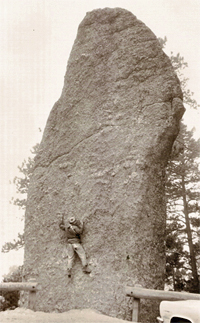|
The Wheel Of Life
''The Wheel of Life'' is a famous boulder problem in the sport of rock climbing. Located in Hollow Mountain Cave in the Grampians of Australia and initially graded , it is now commonly considered to be . Route The problem, which consists of over 60 moves, was first completed by Dai Koyamada in 2004, and it links up three shorter problems that were established by climbers such as Klem Loskot and Fred Nicole (Extreme Cool, V8; Sleepy Hollow V12; Cave Rave, V13). Although it is climbed without a rope, due to its length it may be considered to be a climbing route. It is commonly graded 8C as a boulder problem, and 9a as a route. Graham stated that it was in a league above 9a routes he had climbed, possibly even a 9a+. Notable ascents * Second ascent by the Australian boulderer Chris Webb Parsons, in 2007 -VIDEO YouTube) * Third ascent by Ethan Pringle -VIDEO * Fourth ascent by James Kassay, in 2011 * Fifth ascent by Australian climber Benjamin P. Cossey on 30 October 2011. ... [...More Info...] [...Related Items...] OR: [Wikipedia] [Google] [Baidu] |
Grampians National Park
The Grampians National Park commonly referred to as The Grampians, is a national park located in the Grampians region of Victoria, Australia. The Jardwadjali name for the mountain range itself is Gariwerd. The national park is situated between and on the Western Highway and on the Glenelg Highway, west of Melbourne and east of Adelaide. Proclaimed as a national park on , the park was listed on the National Heritage List on 15 December 2006 for its outstanding natural beauty and being one of the richest Aboriginal rock art sites in south-eastern Australia. The Grampians feature a striking series of mountain ranges of sandstone. The Gariwerd area features about 90% of the rock art in the state. Etymology At the time of European colonisation, the Grampians had a number of indigenous names, one of which was ''Gariwerd'' in the western Kulin language of the Mukjarawaint, Jardwadjali and Djab Wurrung people, who lived in the area and who shared 90 per cent of their vocabul ... [...More Info...] [...Related Items...] OR: [Wikipedia] [Google] [Baidu] |
Bouldering
Bouldering is a form of free climbing that is performed on small rock formations or artificial rock walls without the use of ropes or harnesses. While bouldering can be done without any equipment, most climbers use climbing shoes to help secure footholds, chalk to keep their hands dry and to provide a firmer grip, and bouldering mats to prevent injuries from falls. Unlike free solo climbing, which is also performed without ropes, bouldering problems (the sequence of moves that a climber performs to complete the climb) are usually less than tall. Traverses, which are a form of boulder problem, require the climber to climb horizontally from one end to another. Artificial climbing walls allow boulderers to climb indoors in areas without natural boulders. In addition, bouldering competitions take place in both indoor and outdoor settings. The sport was originally a method of training for roped climbs and mountaineering, so climbers could practice specific moves at a safe dist ... [...More Info...] [...Related Items...] OR: [Wikipedia] [Google] [Baidu] |
Dai Koyamada
Dai Koyamada ( ja, 小山田大, born 23 August 1976) is a Japanese rock climber Rock climbing is a sport in which participants climb up, across, or down natural rock formations. The goal is to reach the summit of a formation or the endpoint of a usually pre-defined route without falling. Rock climbing is a physically and ... and known as one of the leading boulderers of his generation who established some of the List of first ascents (sport climbing)#Solved by men, first-ever boulder problems at . He has also established and repeated, some of the hardest sport climbing, sport climbs in the world. Early life Dai was born on 23 August 1976 in Kagoshima Prefecture and started climbing in 1993. Climbing career In 1996, Koyamada won the Japanese National Championship. This is the event that allowed him to become a professional rock climber. Four years later in 2000 Koyamada left the competitions because he realized "The real nature of my climbing resides in crags". Koyamada ... [...More Info...] [...Related Items...] OR: [Wikipedia] [Google] [Baidu] |

